When the Duke of Edinburgh’s death was announced this morning, I found myself recalling a wonderful afternoon in Paris in 1992 when I had to show him around an exhibition. I was working for the Henry Moore Foundation at the time, and we were staging a huge show of his largest sculptures in the Jardins de Bagatelle in Paris. It had been the most complex logistical project I had ever worked on and the installation alone had taken three weeks. The lorries bringing the sculptures from Perry Green in Hertfordshire to Paris had to travel through the night as convoi exceptionel were not permitted on the periphérique later than 5am.
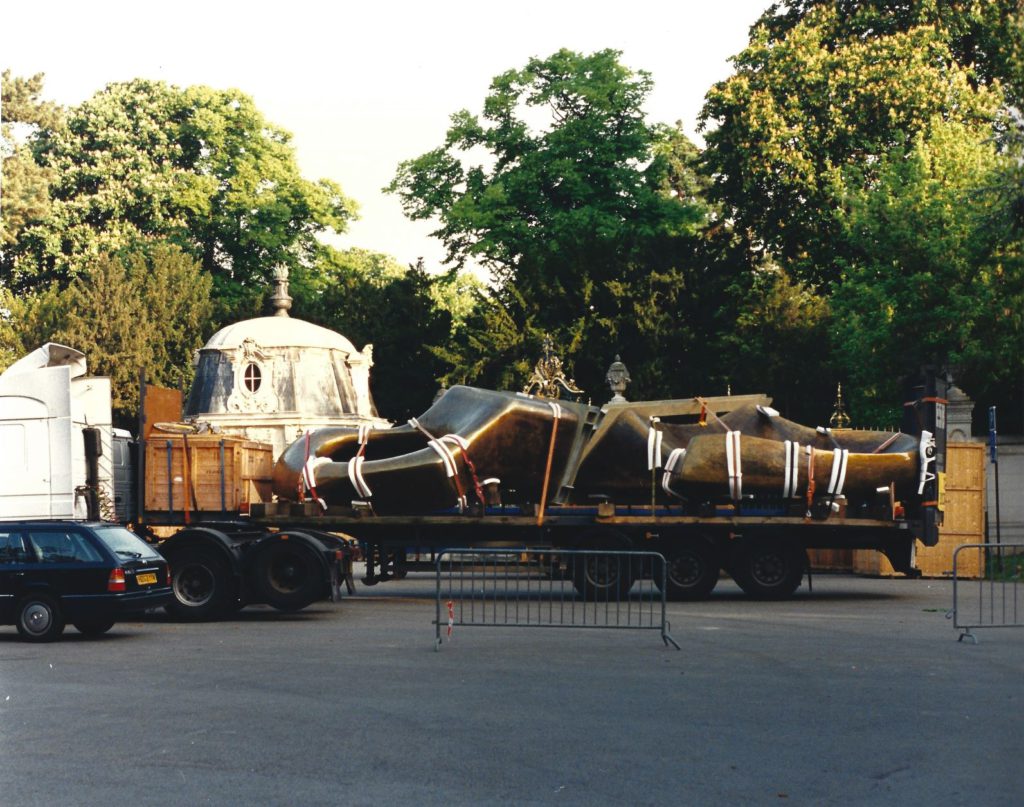
We would all gather at the magnificent baroque entrance gates to the Parc at around 6am, where the crane and lorry drivers would be standing around eating croissants and drinking coffee with the prostitutes who occupied that spot during the night hours. They were a fabulous group of people and we had many laughs about the ridiculous idea of lifting three or four tons of bronze over a set of Baroque gates every morning.
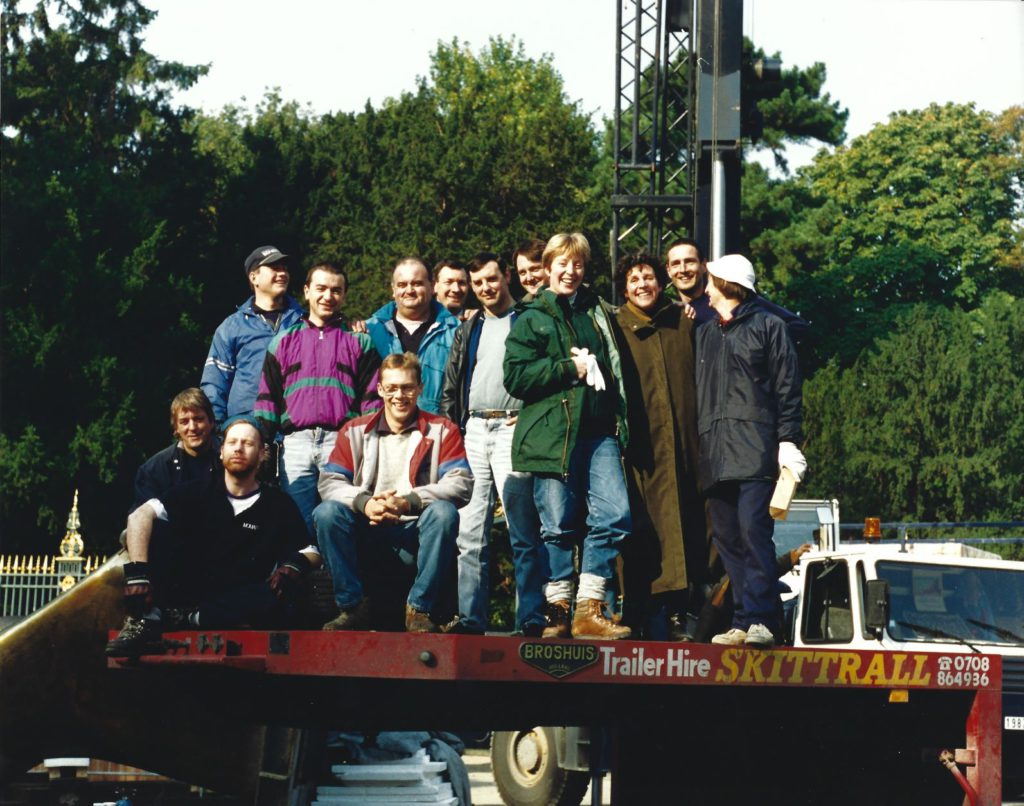
(C) M. Muller
The installation of 29 massive works by Moore was an interesting combination of heavy lifting and exact precision. Each work had to be lowered by crane or forklift onto a pedestal that was less than 5cm larger than the base of the sculpture. And it had to be done exactly right each time as any shifting around damaged the plasterwork on the breeze blocks which meant retouching and repainting.
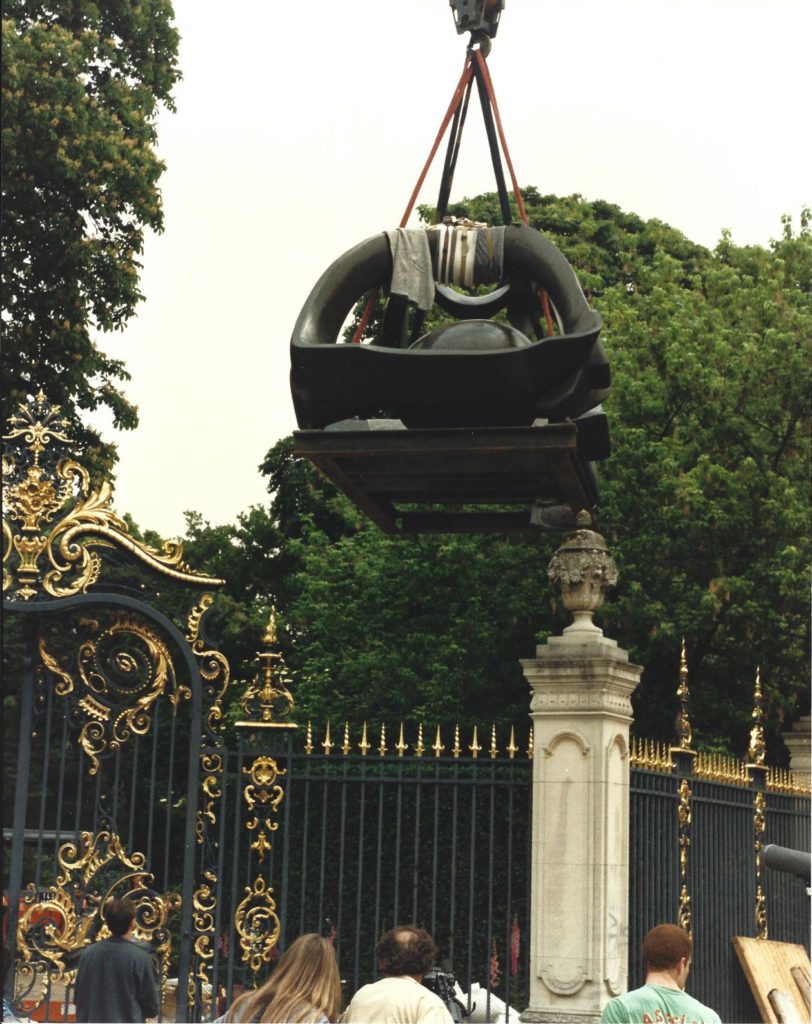
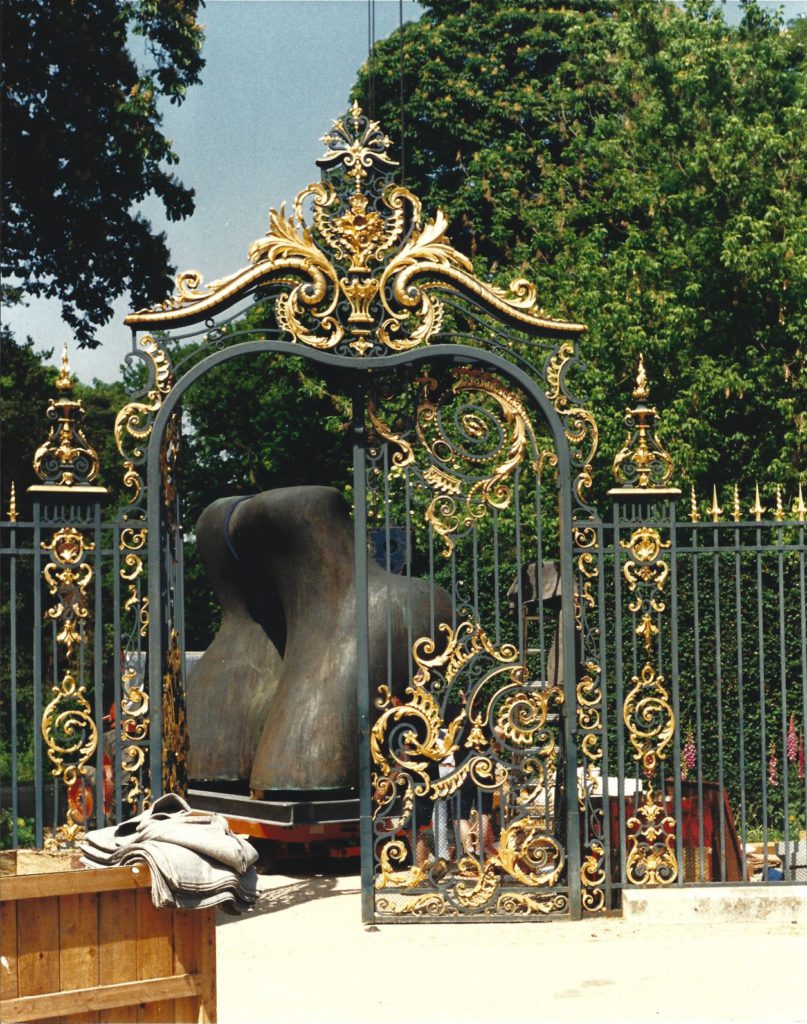
By the time we had finished the exhibition in late May I had cycled hundreds of kilometres around the beautiful Jardins de Bagatelle, avoiding the peacocks. The opening of the exhibition was to coincide with a royal visit to Paris and would be conducted by Her Majesty The Queen with the Duke of Edinburgh, in the presence of the François Mitterrand and Jacques Chirac, who at the time was Mayor of Paris. The Foundation’s director, the late Sir Alan Bowness, was to show The Queen around the exhibition and I was asked to guide the Duke.
I was given a few instructions about protocol including a warning not to ask any questions and not to leave long silences. When the Royal party arrived, I was standing in the appointed place and curtsied to The Queen, who looked at me with her piercing eyes, and then presented to the Duke with whom I set off, a few steps behind The Queen and Alan. We got to the first sculpture, Hill Arches. The Duke turned to me and said: ‘I don’t like Moore’s sculptures’. Oops. This was going to be a very long hour and a half, I thought. Then I remembered he was interested in engineering. ‘Well Sir’ I said, ‘shall I tell you how we got them into the grounds?’ He was fascinated and asked many questions about the cranes we used, the lorries making their stately progress across northern France and the prostitutes who shared our croissants with us.
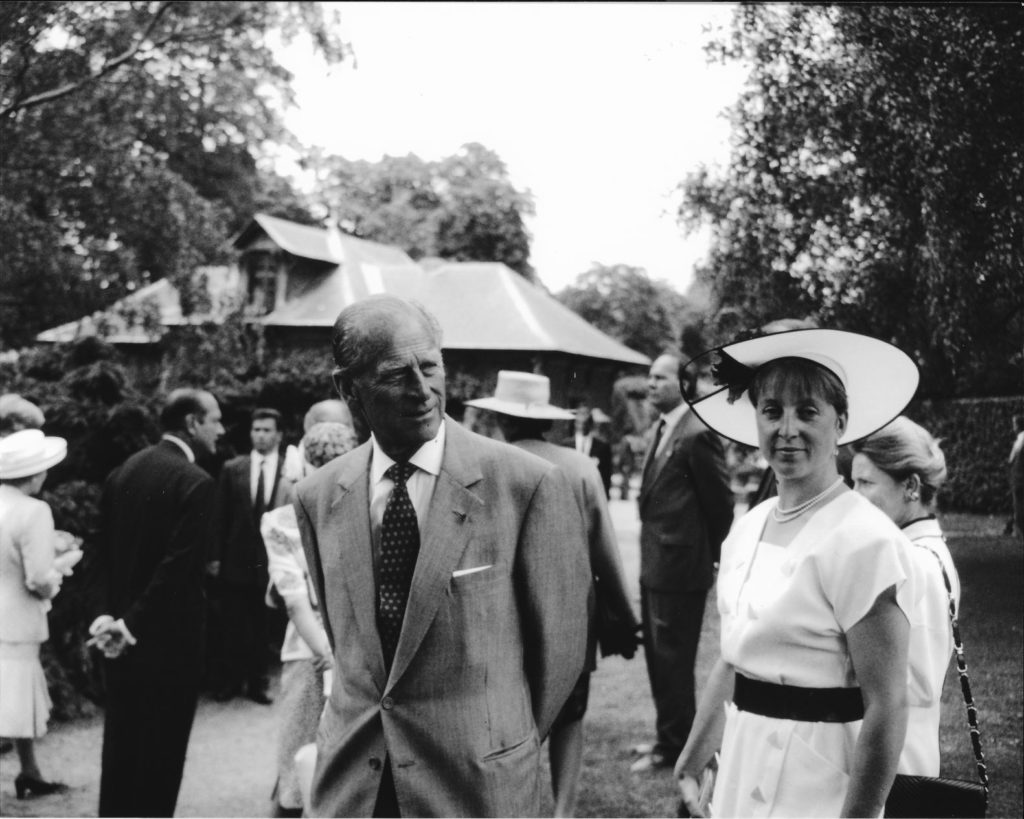
At one stage we had to walk through a long lane between dense shrubs with no sculptures to look at but with a lovely view of the west of Paris in the distance. ‘I grew up over there.’ He said, pointing to Neuilly. He spoke a little about what it had been like growing up outside Paris and how he had known the Jardins de Bagatelle when he was young. Then there was silence. I got a bit anxious, so I decided to chance it and bring up my grandfather, who he had known well in the 1970s when he, the Duke, was Patron of the Liverpool School of Tropical Medicine and my grandfather was the president.
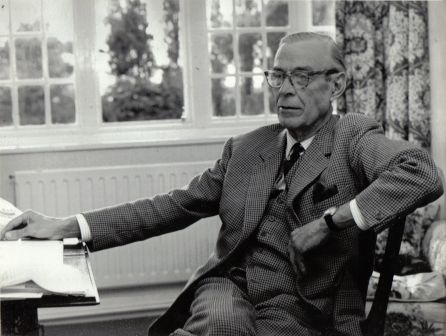
At the mention of his name the Duke stopped dead in the middle of the lane, looked me straight in the eyes and said: ‘Good gracious, are you Phil Toosey’s granddaughter?’ When I said I was he went into a long speech about how much good work my grandfather had done for the Far Eastern Prisoners of War and what a great contribution the School had made to FEPOW health under his presidency. He ended by asking me: ‘Is your mother here today?’ When I said she was he insisted I point her out so he could go over and shake her hand, but not before he had met the lorry drivers who had brought the sculptures to Paris. As we approached the end of the walk, where the crowd of guests had gathered to meet the Royal party, he marched past all the dignitaries from the British Embassy and the Mayor’s office, straight up to Eric, the head lorry driver, whose 42nd birthday it was, and wished him a very happy birthday. ‘A date you share with me,’ he added with a twinkly smile. Of course, it was 10 June 1992, the Duke’s 71st birthday. Eric was overwhelmed but the Duke’s greeting put him at his ease.
He then walked over to my mother, who was shaking like a leaf, and said: ‘Hello Gillian, it’s very lovely to see you here.’ He talked briefly about her father and how much he used to enjoy seeing him in Liverpool when he attended meetings at the School of Tropical Medicine. After that, the Royal party left and Mum and I went out with my husband Chris and various other members of the Henry Moore Foundation team for a long dinner.
There is a PS to this story. Fast forward to 2005 and the publication of my book The Colonel of Tamarkan, the biography of my grandfather and his role in the construction of the bridges on the River Kwai. The book came out in October and the following April a very excited postman arrived at my door with a special delivery. The Duke had seen the book in a catalogue and had bought and read a copy. On page 361 I had written the story of the Blackpool FEPOW reunion of 1973 when my grandfather had hosted him at an event for 3,000 former prisoners of war. The Duke had a strong connection to the men as he and his ship had picked up two Royal Marines in August 1945. The two had been prisoners of the Japanese and had escaped from captivity in the final days of the Second World War. They spotted British vessels near the entrance to Tokyo Bay and immediately stripped off and swam out to safety.
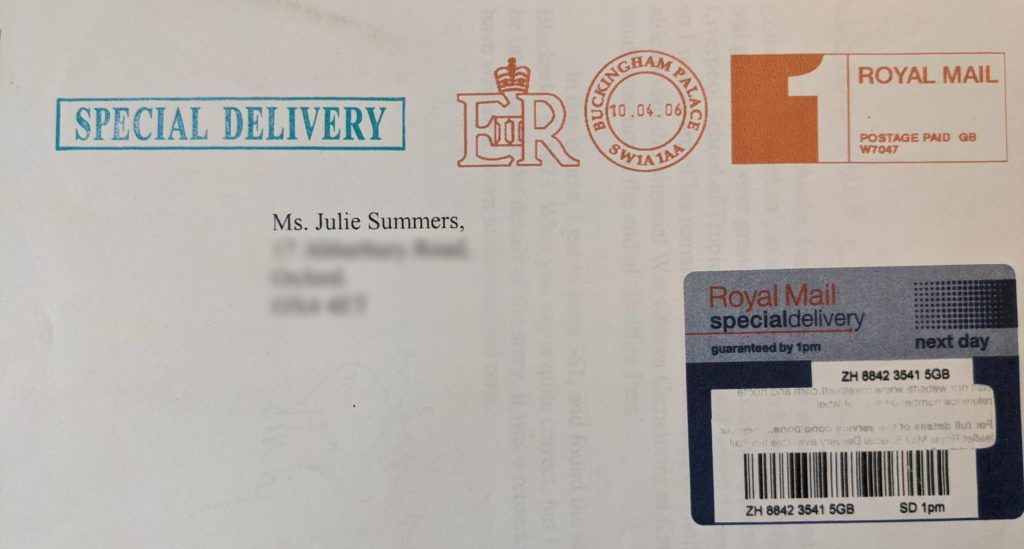
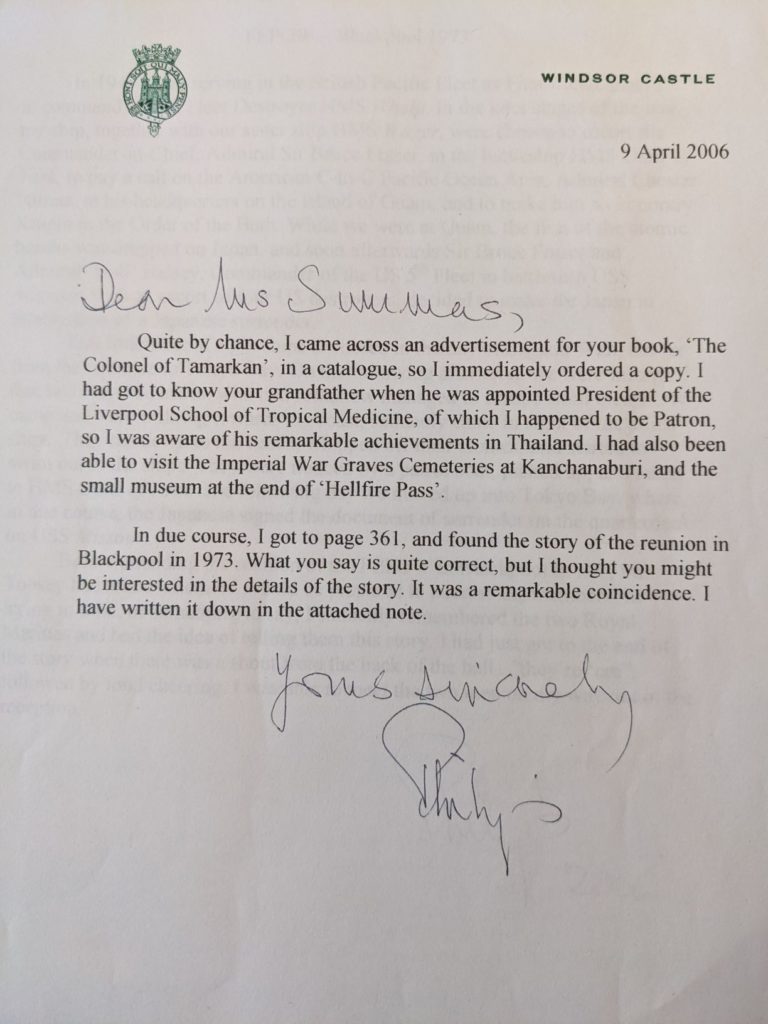
The Duke told this story to the 3,000 men gathered in Blackpool and as soon as he finished a voice piped up from the back of the hall: ‘They’re here!’ The Duke and my grandfather made their way through a sea of excited men who cheered and clapped as the two former Royal Marines and their erstwhile rescuer were reunited. On that occasion the Duke spent so much time with the men that he had to leave for his next appointment without having met and shaken hands with the Mayor of Blackpool and other grandees. My grandfather was highly amused by that.
When I saw the postman this morning, we reflected with sadness that there would be no more recorded deliveries from Windsor Castle for me. But what memories.


What a fabulous story Julie !!! I’ve always had a soft spot for Prince Phillip
Oh my, what a treasure this letter is ! Everything came full circle, for you and for your grandfather.
Thank you for sharing this.
Very interesting,story about a man who sailed the seas of life.A very good life it seems. I think all of those who survived from those times found civvies life a blessing in ways we will never understand.Their times were tough and they were as well.Now His watch is over ,stand down and let the tide do the work sailor.May his Spirit Journey be lit by the ones who came before as well as the love of his family ,nation and fellow crew members.Rest in Peace.
Lovely stories, Julie. What a character.
My father fought in Burma too, but when the British were winning.
Julie, Julie, Julie! Thank you very very much for sharing this wonderful memory. I can picture you and the Duke walking thru the pieces. Quick thinking to divert to the construct of the entire event! And, love the photo. You look like both Audreys. ❤
Thank you all for your very kind comments. He was a remarkable man and I admired him enormously. The last time I saw him was in 2009 at a Commonwealth War Graves exhibition in Canada House. He was asked to sign the visitor’s book and was tapping his jacket to find a pen. The Queen saw him doing so and said: ‘Here, I’ve got a pen in my handbag darling.’ I thought it was enchanting.
Julie – WHAT a wonderful story. He was a very great man. And so was your grandpa.
Thank you, Ingram.
Oh Julie, what memories about an extraordinary man! Thank you for sharing them.
Thank you for sharing this Julie. Accounts like this often only come to light at this juncture. You have captured some important human qualities which lay behind the role.
A wonderful story, brilliantly told.
Thank you, Simon. That’s very kind and generous.
Julie,
Yes, a wonderful account and lovely memories that have been created…. of two great men (snd actually many more people) your Grandfather and Prince Phillip. Beautiful…
Thank you for your comment. I think being brought home a hero was problematic for many of the Far Eastern Prisoners of War. My grandfather always said he was just doing his duty.
A lovely story. I’m always interested in Far East POWs, as my father was captured at the Fall of Singapore and was in Borneo for three and a half years. He came home to Australia, where he and his ‘mates’ were welcomed as hero’s.
In my new role, writing about VOGUE, I intend to spend a lot of time promoting hats! I have quite a collection, Tina.
I enjoyed reading your account and remember well the impression he made on you. What a charismatic man!
I hadn’t realised he’d written to you. It illustrates what we’ve been hearing from all corners. It seems like a wake-up call to the media in particular to honour people (preferably in their lifetime) rather than use nasty reductionist epithets to label people.
P.S love your outfit – hats seem to have become an endangered species, morphing through fascinators, before dissolving in a puff of feathers. Bring back hats!
Such a beautiful story… Such a privilage to meet you, spending time in Adana, and your ideas about “The Rose Garden”
Thank you, Mehmet. I have very happy memories of spending time with you in Adana too.
Hello Julie,
That is a really interesting personal tribute, and a sympathetic story. It is perhaps a pity that our press didn’t write more about this side of Prince Philip during his lifetime.
Your grandfather looks and sounds like a great chap too.
Such special memories of very special people. Lovely to read. Thank you, Julie
A lovely story, or rather a collection of them, well told. Thank you. Having read The Colonel of Tamarkan I imagine that your grandfather and the Duke got along pretty well. They both demonstrated exceptional qualities for long periods of time and in the Colonel’s case in extreme conditions. A wonderful book, may it be a testament to future generations of those virtues which have been out of fashion for some time now.
Thank you, James. They got on very well and admired one another. Prince Philip knew my grandfather was dying when he met him for the last time and when the old boy tried to stand to greet him he said: ‘Sit down.’ When my grandfather struggled again, insisting he should stand, the prince said: ‘Philip, I said sit down.’ Then the prince sat beside him and the two of them sat through the National Anthem. I always found that story very moving.
HRH Prince Philip at his very best. Thank you for sharing your memories of him with us. And of course, your book about your Grandfather is fascinating, particularly to those of us who came to know and care for a number of FEPOWs later in their lives. You will remember giving a talk about him for Combat Stress in Glasgow for which I am still very grateful.